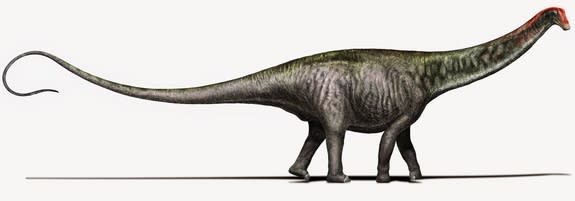 The Daily Buzz
The Daily BuzzThe Brontosaurus is back

A new study is hoping to end a decades-long debate: the Brontosaurus — Greek for “thunder lizard” — is, in fact, both a distinct genus and species, and should no longer be classified as an Apatosaurus.
The Brontosaurus and Apatosaurus are separate species, the researchers claim in their 300-page paper, citing numerous anatomical variations between their new dinosaurs. They found so many variations, that they deemed the Brontosaurus an “entirely new genus,” Vocativ reported.
“It’s the classic example of how science works,” study co-author Octávio Mateus said in a statement. “Especially when hypotheses are based on fragmentary fossils, it is possible for new finds to overthrow years of research.”
Here’s how we lost the Brontosaurus in the first place:
In 1879, during the so-called Bone Wars, palaeontologist Othniel Charles Marsh, in a race with rival palaeontologist Edward Drinker Cope to discover a new dinosaur, published a short paper describing what he called a Brontosaurus: a dinosaur boasting an 80-foot backbone and massive pelvis.
In 1903, shortly after Marsh’s death, scientists discovered a skeleton that appeared to resemble a cross between a Brontosaurus and an Apatosaurus, another long-necked dino discovered by Marsh. The scientific community agreed to classify the two massive mammals under the same genus: Apatosaurus.
The Brontosaurus officially no longer existed — except to school-aged children, although no one really knows why the name stuck around even a century later — until now. (In the 1970s, a rumour started circulating that the Brontosaurus was simple an Apatosaurus with the wrong head because of the Apatosaurus’ relationship to the Diplodocus, which had a slender, horse-like skull. This was untrue.)
“We’re delighted that Brontosaurus is back,” Jacques Gauthier, curator of vertebrate palaeontology and vertebrate zoology at the Yale Peabody Museum of Natural History, told Scientific American. “I grew up knowing about Brontosaurus — what a great name, ‘thunder lizard’ — and never did like that it sank into Apatosaurus.”
Thanks to digital libraries containing high-res scans “of every diplodocid bone ever dug up,” scientists were able to use algorithms to compare almost 500 different physical traits and discover that the differences between the two dinosaurs were significant enough to bring back the Brontosaurus name.
“Generally, Brontosaurus can be distinguished from Apatosaurus most easily by its neck, which is higher and less wide,” said lead study author Emanuel Tschopp, a vertebrate palaeontologist at the New University of Lisbon in Portugal. “So, although both are very massive and robust animals, Apatosaurus is even more extreme than Brontosaurus.”
“The real importance of this paper is this is the first time that this group of sauropods have been analyzed in a big fashion,” Mark Norell, the top palaeontologist at the American Museum of Natural History in New York, told Wired.
Only time will tell how quickly the rest of the scientific community accepts these findings.
“The conclusions seem entirely reasonable to me, as they are well argued and well supported, and it will be interesting to see how quickly these suggestions are adopted by the community,” Professor Paul Barrett of London’s Natural History Museum told BBC News.
“I think the verdict is still out,” a more cautious Kenneth Carpenter, director and curator of palaeontology at Utah State University Eastern’s Prehistoric Museum, told Scientific American.
Some are just thrilled to have their favourite childhood dinosaur validated again, and are holding out hope that Pluto, stripped of its planet status in 2006, will also have a chance at redemption.
“The important thing, which [experts] all agree on, is that papers like this allow for more and better anatomical comparisons in the future. That’s great for palaeontology, but let’s be honest: All the rest of us really care about is that Brontosaurus is back. And if we’re lucky, good ole Pluto might not be far behind,” wrote Wired’s Nick Stockton.

